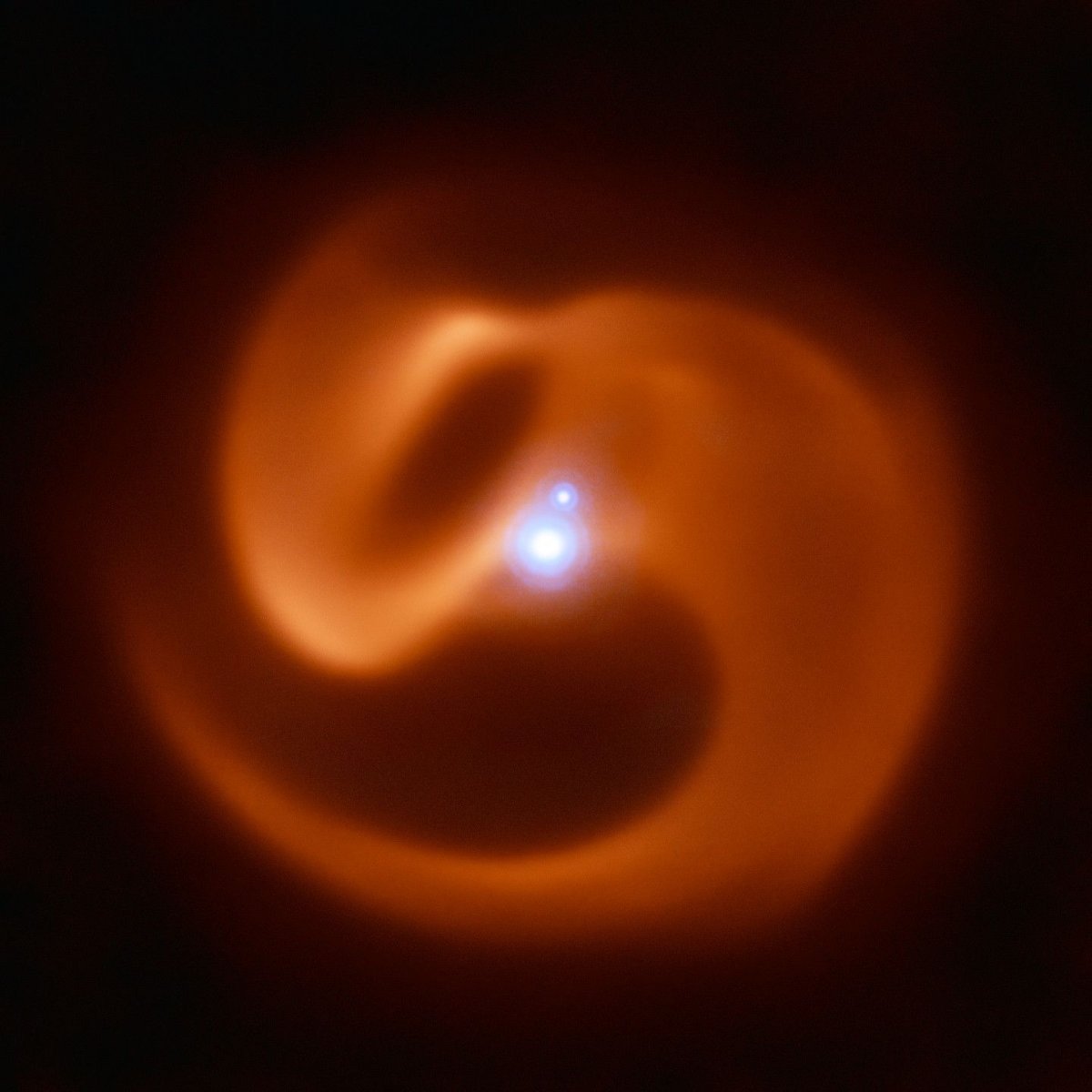A massive star that appears to be gearing up to produce one of the most explosions in the universe—a gamma-ray burst—has been discovered in the Milky Way. The star is part of a newly discovered binary system, where two stars orbit one another. Because of its size, velocity and potential to explode, the system has been dubbed Apep, after the ancient Egyptian god of chaos.
Gamma-ray bursts are bursts of gamma-ray light, which is the most energetic form of light. When they erupt, they shine about a million trillion times as bright as the Sun. If one were directed at Earth, it could strip the planet of the ozone layer. This one, located about 8,000 light-years away, is not pointed at us, so the planet is safe. Instead scientists can observe the system to learn more about stars before they explode as supernovas.
The two stars in the system are Wolf–Rayet stars—huge, hot stars that are in the final stages of their lifetimes. Wolf-Rayet stars that rotate at extremely fast speeds are thought to be a source of gamma-ray bursts.
An international team of researchers led by Joseph Callingham, from the Netherlands Institute for Radio Astronomy, spotted the system during a survey of the sky. The findings are published in Nature Astronomy.
"We knew immediately we had found something quite exceptional: the luminosity across the spectrum from the radio to the infrared was off the charts," Callingham said in a statement. "When we saw the stunning dust plume coiled around the these incandescent stars, we decided to name it 'Apep'—the monstrous serpent deity and mortal enemy of Sun god Ra from Egyptian mythology."
The team studied the system and found the two stars are orbiting one another. As they spin around, they are spewing out a huge amount of material in the form of stellar wind. This wind is moving at around 7.5 million miles per hour.

"When we saw the spiral dust tail we immediately knew we were dealing with a rare and special kind of nebula called a pinwheel," study co-author Peter Tuthill, from the University of Sydney, said in a statement. "The curved tail is formed by the orbiting binary stars at the center , which inject dust into the expanding wind creating a pattern like a rotating lawn sprinkler. Because the wind expands so much, it inflates the tiny coils of dust, revealing the physics of the stars at the heart of the system."
While observing the star, the team found something odd. Dust from the stars was expanding at a far slower rate than the wind and this mismatch was something to do with the speed at which the stars were rotating. One of the stars, they found, is spinning so fast it looks like it is on the verge of breaking up. When this happens, it has the capacity to produce a gamma-ray burst.
Tuthill says they are not sure this will happen—the rotation may slow down and it could explode like any other supernova. If it does produce a gamma-ray burst, however, this would be the first one discovered in the Milky Way. "It is providing astronomers a ringside seat into beautiful and dangerous physics that we have not seen before in our galaxy," he said.
In a related article, Ryan M. Lau, from the Japan Aerospace Exploration Agency, said it is still unclear which of the Apep stars is about to explode so more research will be needed to get a better understanding of the system. "An interesting discovery raises many more questions than answers, and Apep is no exception," he wrote.
Uncommon Knowledge
Newsweek is committed to challenging conventional wisdom and finding connections in the search for common ground.
Newsweek is committed to challenging conventional wisdom and finding connections in the search for common ground.
About the writer
Hannah Osborne is Nesweek's Science Editor, based in London, UK. Hannah joined Newsweek in 2017 from IBTimes UK. She is ... Read more
To read how Newsweek uses AI as a newsroom tool, Click here.








